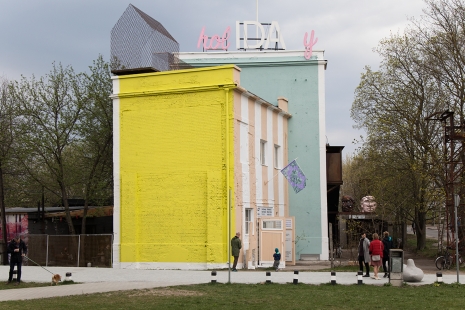In studying the changing city fabric of Tallinn, the curatorial duo TOK relies on the apparatus of ‘intensive geography’ and ‘intensive place’, terms coined by Russian philosopher and media researcher Mikhail Kurtov. An intensive place is a power place, where processes begin from and where they are retained; where experiences are connected and from where they move on to other contexts; where previously not-connected actions and ideas gather and transform into new concepts that help generate new knowledge and modes of being.
The exhibition and accompanying activities will be aimed at mapping the ‘intensive places’ through participatory works, community-based actions and analysis of both obvious and unseen urban processes, properties and structures that are embedded into power structures, architectural constructions, societal, economical and ecological environments.
TOK curators see the Tallinn Photomonth biennial as a network of intensive places scattered around the city in the spaces and open public locations that have historical, emotional, contextual, architectural value and significance for the city residents and that through their operation accumulate and disperse knowledge.
Creative Association of Curators TOK, originating in St Petersburg, was co-founded in 2010 by Anna Bitkina and Maria Veits as a platform for interdisciplinary research-based projects in the field of contemporary art, architecture, design and social science. The curatorial collective, often working outside of the white cube, endeavour to challenge the borders of the art territory and seek new ways to foster social change through diverse formats of curatorial strategy, artistic production and institutional format.
Tallinn Photomonth is an international biennial of contemporary art, initiated by the Estonian Union of Photography Artists (Foku) in 2011. It coordinates and supports collaboration between art institutions, galleries and artists. Initiated by a group of artists working mainly with photography and video, today, the festival has expanded its medium specificity and looks more broadly at developments in art and society in a world increasingly mediated by cameras, screens and images.





